
How to Choose Between Remy and Non-Remy Clip-In Hair Extensions
When you buy 100% human hair extensions clip-in, you will notice a big difference. Remy hair keeps its cuticles together and aligned, making your hair look natural and feel smooth. Many people choose Remy because it is easy to handle, style, and lasts longer. If you want 100% human hair extensions clip-in that last and look real, Remy is an excellent choice. Non-Remy hair is a good option for those who want to save money or change their style temporarily. The best choice for you depends on your budget and how often you plan to use them.
Difference Between Remy and Non-Remy Hair
Collection and Processing
To see how remy and non-remy hair are different, you should know how each is collected and handled. Remy hair comes from one person. It is cut in a ponytail or bundle. This keeps the hair cuticles lined up from root to tip. This careful way helps remy hair stay shiny and strong. Non-remy hair comes from many places. People pick it up from salon floors, temples, or other suppliers. The hair gets mixed, so the cuticles point in many ways.
Aspect | Remy Hair Collection Method | Non-Remy Hair Collection Method |
|---|---|---|
Source | Collected directly from a single donor, often cut in a ponytail or bundle to keep cuticles aligned | Collected from multiple sources such as salon floors, temples, or random suppliers, mixing cuticle directions |
Cuticle Condition | Cuticles remain intact and aligned in the same direction (root to tip) | Cuticles are mixed, misaligned, or stripped |
Quality Preservation | Preserves cuticle alignment, reducing tangling and maintaining natural look and feel | Requires harsh chemical treatments to strip cuticles and silicone coating to mask quality issues |
Processing | Ethically sourced, minimal processing to maintain cuticle integrity | Extensive processing including acid baths and silicone coating to improve initial appearance |
Durability & Appearance | Long-lasting, soft, shiny, tangle-free, and can be styled or colored | Prone to tangling, matting, brittleness after few washes as silicone wears off, less durable and lower quality |
Ethical Considerations | Often sourced through donation or direct purchase from individuals | Sourced indiscriminately from various suppliers without quality control |
Remy hair is made in small groups and handled gently. This keeps the cuticles safe and lined up. Non-remy hair gets mixed, so the cuticles do not match. Factories use strong chemicals to remove the cuticles. Then they put silicone on the hair. This makes non-remy hair look shiny at first. But the coating comes off fast. Both types may go through double drawing. This makes the hair extensions the same length. Remy hair needs less chemical treatment. This helps keep its quality high.
Tip: If you want hair extensions that last and look real, pick remy hair. How the hair is collected and handled changes the quality.
Cuticle Alignment
Cuticle alignment is very important for hair extensions. Remy hair has all cuticles going the same way. The cuticles are not removed. The hair stays smooth and does not tangle much. When you touch remy extensions, they feel soft and look shiny. The hair moves like your own hair because the cuticles protect each strand.
Non-remy hair does not have this alignment. The cuticles are removed or point in different ways. This makes the strands rub together. It causes tangling, matting, and shedding. Factories put silicone on non-remy hair. This makes it feel smooth at first. After a few washes, the silicone comes off. The hair feels rough again and tangles more.
Remy hair: Cuticles lined up, less rubbing, less tangling, lasts longer.
Non-remy hair: Cuticles not lined up or removed, more rubbing, more tangling, does not last long.
Note: Good cuticle alignment helps hair keep moisture, stay shiny, and avoid damage. This is why quality is important when you pick extensions.
Quality and Longevity
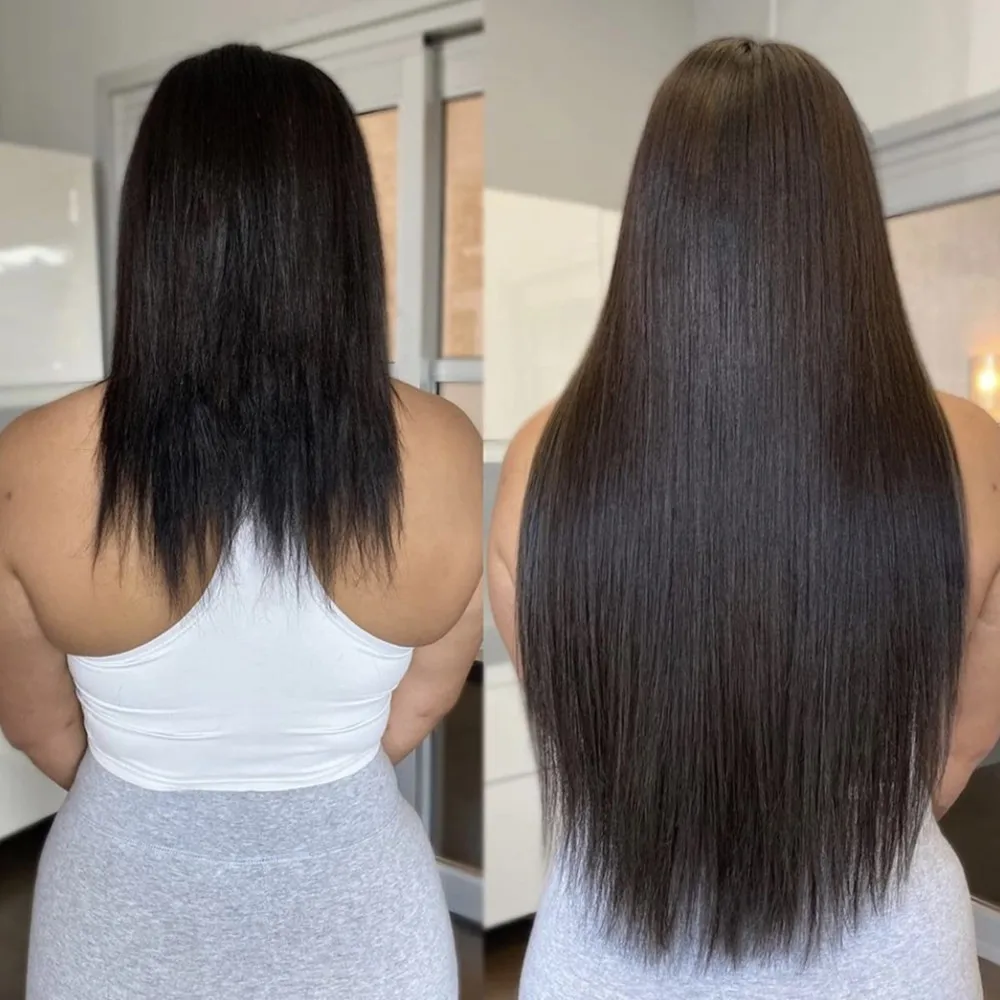
How good your extensions are depends on how the hair is collected and how the cuticles are treated. Remy hair is special because it keeps its cuticles safe and lined up. This makes remy extensions soft, shiny, and easy to style. You can curl, straighten, or dye remy hair. The extensions do not tangle much and last longer than non-remy hair.
Non-remy hair loses quality fast. The cuticles are removed, so the hair gets dry, dull, and breaks easily. The extensions may look nice at first. But after a few washes, they tangle and shed. You will see more frizz and breakage. Non-remy extensions last only a few months. Remy hair can last up to two years if you care for it.
Hair Extension Type | Cuticle Alignment | Durability & Maintenance | Average Lifespan |
|---|---|---|---|
Remy Hair | Aligned | Less prone to tangling, can be styled and treated like natural hair | 3 to 24 months with proper care |
Non-Remy Hair | Not aligned | More prone to tangling and matting, lower quality and durability | Around 4 to 6 months |
Synthetic Hair | N/A | Prone to tangling, cannot be revived once damaged | 2 to 3 months |
Remember, quality is important. Remy hair gives you better strength, a natural look, and is easier to care for. Non-remy hair costs less, but you may spend more time fixing tangles and buying new extensions. If you want hair that lasts and looks good, remy is the best choice.
Remy Hair

100% Human Hair Extensions Clip-In
When you choose 100% human hair extensions clip-in, you get the best results with remy hair. Remy hair comes from a single donor. All the cuticles stay intact and point in the same direction. This makes the extensions smooth, shiny, and easy to blend with your natural hair. Virgin remy hair is the highest quality human hair. It has never been chemically treated. You can style, color, and wash these extensions just like your own hair. Indian remy hair is a popular choice because it feels soft and looks natural. Remy hair extensions give you a real human hair experience that lasts.
Remy hair is collected from one donor, keeping cuticles aligned.
Indian remy hair offers a silky, natural texture.
Remy hair extensions blend well with your own hair and look real.
High-quality extensions like virgin hair extensions last longer and stay beautiful.
Benefits of Remy Hair
Remy hair extensions offer many advantages. You will notice the difference in quality right away. The cuticle alignment keeps the hair from tangling and matting. You can style remy hair with heat tools and even color it. Indian remy hair holds its shine and softness for months. Many users say remy hair extensions save time and money because they last longer than other types of human hair extensions.
Remy hair gives a natural look and feel.
Extensions resist tangling and shedding.
You can style, curl, or straighten remy hair.
Remy hair extensions blend seamlessly with your own hair.
Indian remy hair keeps its silky luster with proper care.
Remy hair is a smart investment for anyone who wants high quality human hair.
Tip: Quality matters when you pick extensions. Remy hair gives you the best value and appearance.
Care and Maintenance
Proper care helps your remy hair extensions last longer. Always use a sulfate-free shampoo and wash with gentle downward strokes. Rinse with lukewarm water and apply a hydrating conditioner. Let the extensions air dry flat to avoid heat damage. Brush gently from the ends upward with a wide-tooth comb. Moisturize with argan oil to keep the hair soft and shiny. Use heat styling tools on low settings and always apply a heat protectant. Protect your extensions at night by covering them with a silk scarf or braiding them loosely. Indian remy hair responds well to these care steps and stays beautiful for months.
Wash with sulfate-free shampoo and lukewarm water.
Condition and rinse thoroughly.
Air dry flat and brush gently.
Moisturize with nourishing oils.
Use low heat and protect from damage.
Cover or braid extensions before sleep.
With the right care, your 100% human hair extensions clip-in will look and feel amazing. Indian remy hair and other remy hair extensions can last up to a year or more. Remember, quality matters for long-lasting, beautiful extensions.
Non-Remy Hair Extensions

Sourcing and Processing
You might wonder where non-remy hair comes from and how it is made into extensions. Non-remy hair usually comes from many sources. In India, people collect hair from homes, public places, and even sewers. This hair is often called “hair balls.” The quality can be low because the hair is mixed and not from one person. India exports most of this hair to China. In China, factories use advanced machines to clean and process the hair. They use strong chemicals to remove the cuticles and make the hair smooth and shiny. This process can make the hair look good at first, but it may become weak and fragile over time.
Aspect | India (Major Source) | China (Major Processor) |
|---|---|---|
Sourcing | Hair balls from homes, public spaces, sewers | Imports from India, Brazil, others |
Hair Quality | Lower quality, coarse, thin temple hair | Mixed quality, often chemically treated |
Processing Techniques | Outdated methods, minimal reprocessing | Advanced equipment, heavy chemical use |
Price Range | Starts at $7.9 for 6-inch weft | |
Product Range | Mainly non-remy hair products | Remy and non-remy hair products |
Pros and Cons
Non-remy hair extensions offer both benefits and drawbacks. You can buy these extensions at a much lower price than remy hair. For example, non-remy clip-in extensions in the United States often start at $50, while remy versions can cost $150 or more. This makes non-remy a good choice if you want to try human hair extensions without spending a lot. You can also find many styles and lengths.
However, non-remy hair does not last as long as remy hair. The hair tangles and sheds more because the cuticles are not aligned. After a few washes, the extensions may lose their shine and become rough. You may need to replace them sooner, which can add to your costs over time.
Note: Non-remy hair extensions work well for short-term use or special events, but they may not be the best choice for daily wear.
Maintenance Tips
You can help your non-remy hair extensions last longer with the right care. Here are some simple tips:
Brush your extensions gently with a wide-tooth comb or a brush made for extensions. Start from the ends and work up to avoid pulling.
Use sulfate-free shampoos and conditioners to keep the hair soft and prevent dryness.
Wash the extensions with lukewarm water. Avoid rubbing or twisting the hair.
Always use a heat protectant before styling with hot tools. Keep the heat setting low.
Never sleep with wet extensions. Tie your hair loosely or braid it before bed to stop tangling.
Store your extensions in a cool, dry place. Use a breathable bag or hanger to keep them safe.
If you follow these steps, you can enjoy your non-remy hair for several months. Remember, non-remy hair extensions need more care than remy hair, but you can still get a natural look with real human hair.
Comparison
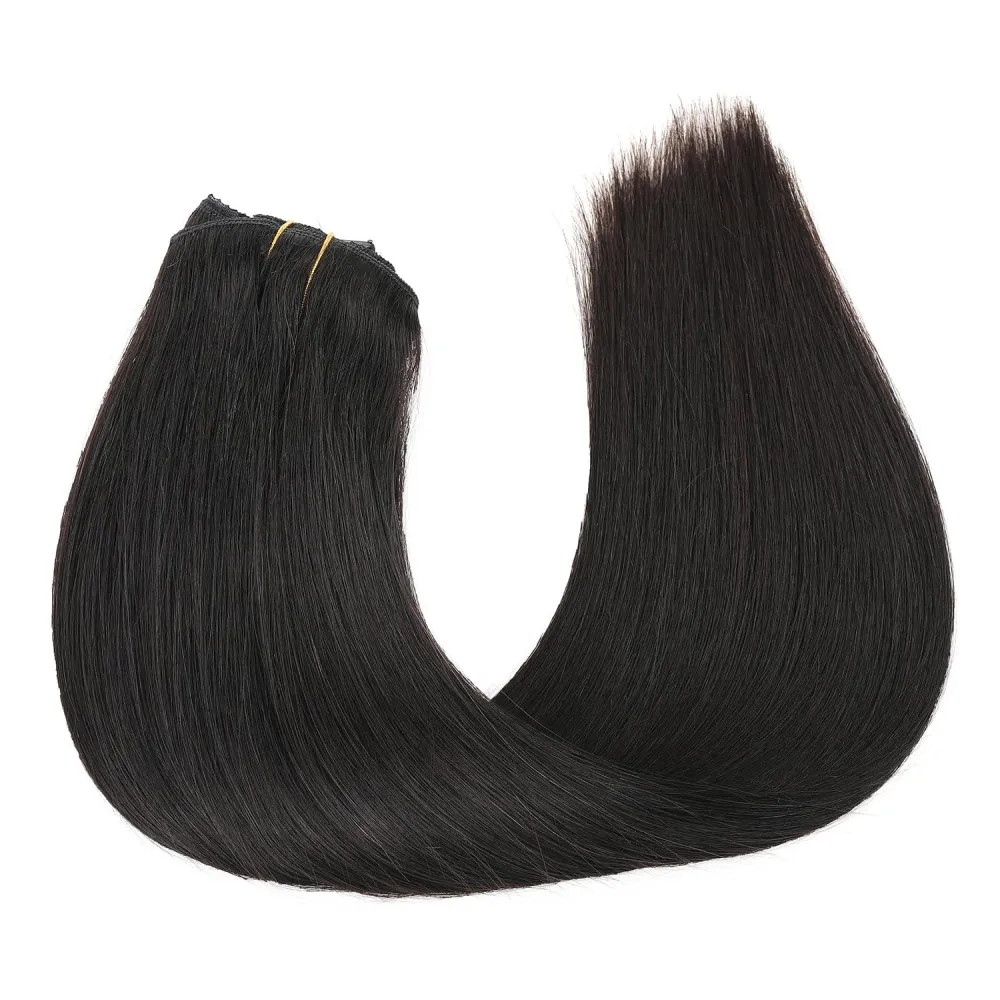
Appearance and Feel
When you choose remy hair extensions, you notice a soft, smooth texture right away. Remy hair keeps the cuticles aligned, so the extensions feel comfortable and blend with your own hair. You get a natural look and seamless blending. Remy hair shines and stays healthy for months. Non-remy hair extensions look glossy at first because of a silicone coating. After a few washes, non-remy hair becomes dull, dry, and rough. The cuticles in non-remy hair point in different directions, so you feel more tangling and matting.
Feature/Aspect | Remy Hair Extensions | Non-Remy Hair Extensions |
|---|---|---|
Cuticle Alignment | Aligned | Misaligned |
Appearance | Soft, smooth, natural shine | Glossy at first, dull later |
Feel | Comfortable, blends well | Rough, tangles easily |
Blending | Seamless blending | Harder to blend |
Tip: Remy hair extensions give you a natural appearance and feel, while non-remy hair extensions need more care to look good.
Durability
Remy hair stands out for durability. You can use remy hair extensions for six months or more if you care for them. The cuticles stay intact, so the hair resists tangling and breakage. Remy hair keeps its quality and shine over time. Non-remy hair does not last as long. Non-remy hair extensions lose their shine and strength quickly. You may need to replace non-remy hair after a few weeks or months.
Remy hair: Lasts 6–12 months with proper care.
Non-remy hair: Lasts less than 6 months, often just a few weeks.
Price
Remy hair extensions cost more because of their quality and durability. You pay between $100 and $500 for remy hair. Some brands, like Luxy Hair, offer remy hair extensions from $169 to $300 or more. Non-remy hair extensions cost less. You can find non-remy hair for $60 to $85. The lower cost makes non-remy hair a good choice for short-term use or if you want to save money.
Hair Extension Type | Price Range (USD) | Notes |
|---|---|---|
Remy Hair | $100 – $500 | High quality, long-lasting |
Non-Remy Hair | $60 – $85 | Lower quality, short-term use |
Note: Remy hair costs more up front, but you save money over time because you replace extensions less often.
Styling and Care
Remy hair extensions act like your own hair. You can style, color, wash, and cut remy hair. The cuticles stay aligned, so remy hair resists tangling and damage. Use gentle products, sulfate-free shampoos, and natural oils to keep remy hair soft and shiny. Non-remy hair extensions need less care because they do not last long. You cannot style non-remy hair as much. Non-remy hair tangles and becomes brittle after washing or heat styling.
Aspect | Remy Hair Extensions | Non-Remy Hair Extensions |
|---|---|---|
Styling Versatility | Can style, color, wash, and cut | Limited styling, tangles easily |
Care Requirements | Gentle care, natural oils, soft brushing | Basic care, prone to damage |
Lifespan | 6–12 months with proper care | Less than 6 months |
Remy hair: Easy to style and care for, keeps quality longer.
Non-remy hair: Needs more effort to avoid tangling, does not hold styles well.
Choosing the Right Clip-In Extensions
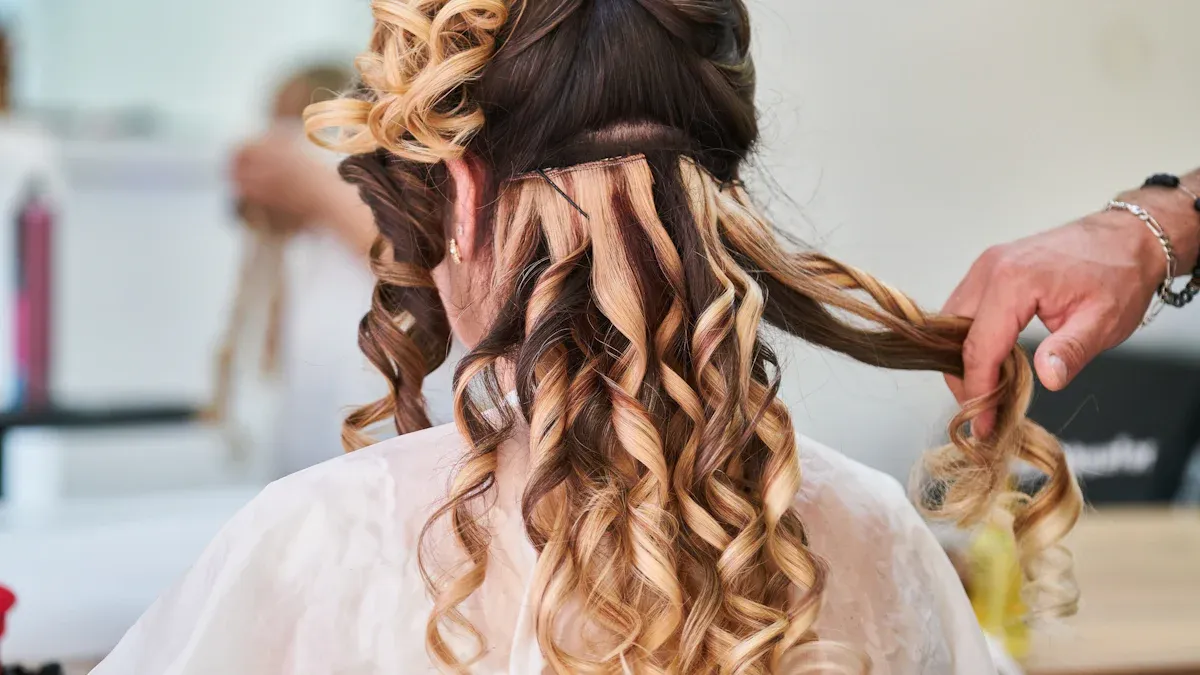
For Everyday Use
If you want to wear extensions every day, focus on comfort and a natural look. Remy hair is best for daily use. It stays soft and shiny. Remy hair blends well with your own hair. These extensions last longer than non-remy hair. You can style remy hair with heat tools. You can wash, curl, or straighten remy hair. Virgin hair extensions are also great for daily wear.
When picking extensions for everyday use, remember these tips:
Match the color to your hair and skin for a natural look.
Choose remy hair or 100% human hair for the best results.
Pick heavier extensions for thin hair. Lighter ones work for thick hair.
Add only 2 to 3 inches in length for a natural style.
Look for silicone-lined clips for comfort and security.
Make sure the texture matches your own hair.
Install extensions gently. Do not pull or clip too close.
Use sulfate-free shampoo and brush softly.
Tip: Remy hair extensions tangle less and break less. They are great for daily use. Take breaks from wearing extensions to keep your hair healthy.
For Occasional or Budget Use
If you need extensions for special events or want to save money, you have more choices. Non-remy hair extensions cost less. They work well for short-term use. You can also buy synthetic extensions. These are cheaper but do not look or feel as real as human hair.
Here is a table to help you compare popular choices for occasional or budget use:
Brand/Option | Hair Type | Key Features & Suitability | Price Range / Value | Expert Notes & Suitability for Query |
|---|---|---|---|---|
Luxy Hair | 100% Remy human hair | Ethically sourced, natural shine, easy to install, beginner-friendly | Mid-range, accessible for casual users | Recommended for first-time users and casual styling; tutorials aid seamless blending, ideal for occasional use. |
Zala Hair Extensions | Double-drawn Remy | Thick, minimal shedding, clip-in and ponytail options | Competitive pricing, premium quality | Ideal for budget-conscious customers seeking quality without compromising durability and style. |
Locks and Mane | Remy human hair | Natural multi-tonal shades, seamless blend, variety of styles | Around $155 for 12-inch clip-ins | Offers great value and natural look; slightly less durable but suitable for budget-conscious users wanting natural results. |
Barely Xtensions Ponytail | Synthetic | Quick installation, blends well, 3 shades | Affordable synthetic option | Praised for ease and speed of use; synthetic fibers mean less realistic feel but good for occasional wear and budget. |
Non-remy hair extensions let you try new styles for less money. They do not last as long as remy hair. They are good for parties, weddings, or trying a new look. Synthetic extensions are even cheaper. You cannot use heat on them. They do not blend as well.
Note: If you want to save money, pick non-remy hair or synthetic extensions for short-term use. Remy hair from brands like Zala or Luxy Hair gives good quality for the price if you wear them sometimes.
Matching to Your Needs
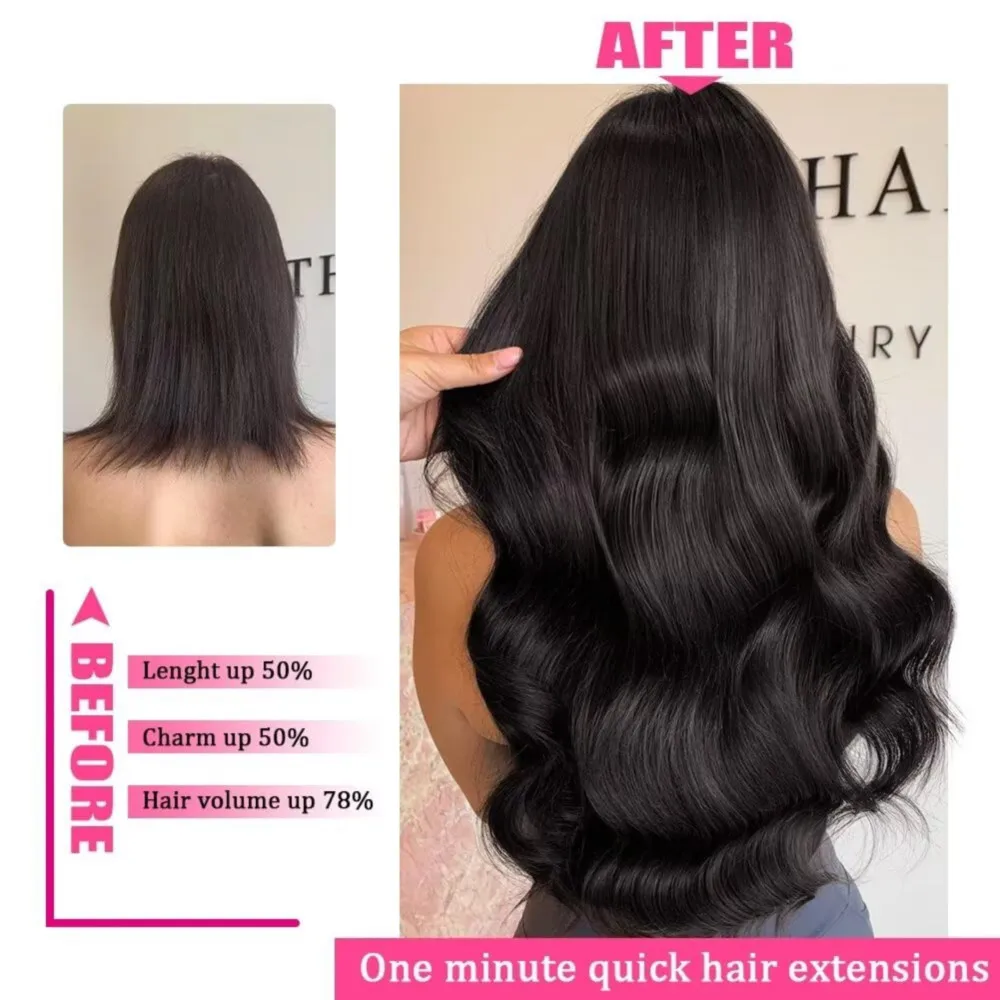
Always choose extensions that fit your lifestyle, hair health, and style. If you are active, pick extensions that can handle movement and sweat. Clip-in or tape-in types work well. Remy hair gives you more ways to style and lasts longer. Non-remy hair is fine for quick changes or if you want to spend less.
Think about these things when picking extensions:
How often will you wear them? For daily use, pick remy hair. For special events, non-remy or synthetic is fine.
What is your hair type and texture? Match extensions to your hair for the best blend.
How much time can you spend on care? Remy hair needs gentle care. Non-remy hair needs more work to stop tangling.
What is your budget? Remy hair costs more but lasts longer. Non-remy and synthetic are cheaper but need replacing sooner.
Do you care about the environment? Pick reusable wefts or ethically sourced remy hair for a green choice.
Lifestyle Type | Recommended Extension Types | Key Features & Benefits | Maintenance Tips |
|---|---|---|---|
Active Lifestyle | Tape-In, Clip-In | Lightweight, easy to remove and reapply | Use sulfate-free shampoos, gentle brushing, low heat styling |
Office/Low-Key | Sew-In, Bonded | Fuller look, less frequent maintenance | Regular washing, deep conditioning, professional upkeep |
Occasional Use | Clip-In | Temporary, easy to apply and remove | Store properly, wash occasionally, brush before and after use |
Fashion Enthusiasts | Nano Tip | Customizable, flexible styling | Regular maintenance, careful styling |
Eco-Conscious | Reusable Wefts (Hand-tied, Hybrid) | Sustainable, reusable, ethically sourced | Gentle handling, proper care |
Remember: The best extensions for you depend on your routine, hair goals, and budget. Remy hair extensions give most people the best quality. Non-remy and synthetic extensions are good for special needs or small budgets.
How to Spot Genuine Remy and Non-Remy Hair
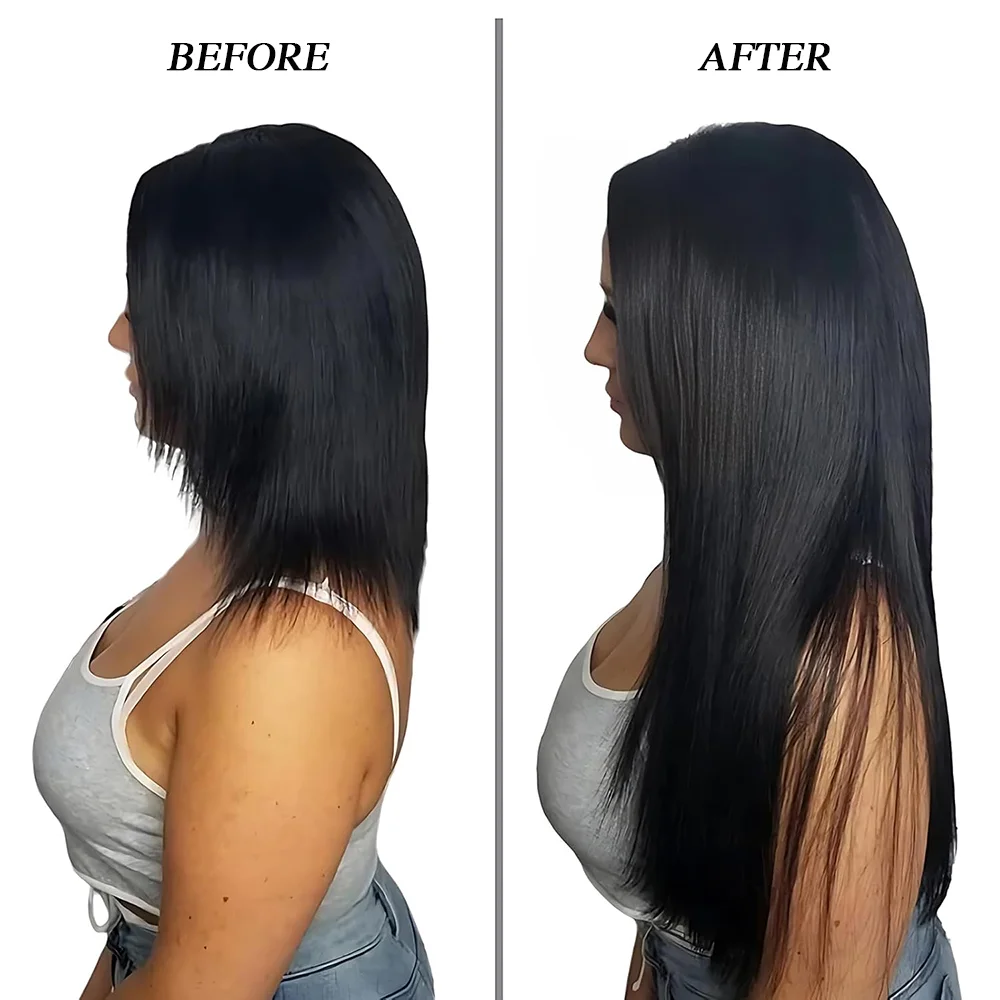
Shopping Tips
You want to make sure you buy real remy hair. Start by checking the cuticle alignment. Run your fingers from the root to the tip. Remy hair feels smooth in this direction. If you move your fingers from tip to root, you will feel a slight roughness. This happens because the cuticles stay intact and point the same way. Remy hair extensions look shiny and feel soft. Hold them up to natural light. You should see a natural shine and even thickness from top to bottom.
Try the water test. Drop a small piece of hair into a glass of water. Genuine remy hair sinks because it is porous. Synthetic hair floats. You can also do a burn test. Real remy hair burns slowly and smells like burning protein. It leaves a powdery ash. Synthetic hair melts and smells like chemicals.
Check the color. Remy hair often has small color changes because it is not heavily processed. This makes it look more natural. Trusted brands like XO Quality Hair and SISHAIR offer high-quality remy hair extensions. Ask your stylist for advice if you are not sure. Experts can help you spot real remy and non-remy hair.
Tip: Remy hair costs more, but you get better quality and longer-lasting extensions.
Red Flags
Watch out for signs that hair is not genuine remy. If the price seems too low, you may be looking at non-remy hair or synthetic hair. Non-remy hair often feels rough or tangles easily. If the hair looks too shiny, it may have a heavy silicone coating. This coating washes off after a few uses, leaving the hair dull and tangled.
Check the packaging. Real remy hair extensions come from trusted brands and list the source. If you see no information about the donor or the origin, be careful. Some sellers label non-remy as remy to charge more. Always ask for details about the hair’s source and processing.
Red Flag | What It Means |
|---|---|
Very low price | Likely non-remy or synthetic |
No source information | Could be mixed or low-quality hair |
Too shiny or slippery | Heavy silicone coating, not remy |
Tangles after washing | Cuticles not aligned, likely non-remy |
Note: Always buy from trusted sellers. Ask questions and check reviews before you choose remy or non-remy hair.
Choosing between Remy and Non-Remy clip-in hair extensions depends on what matters most to you. Remy hair offers aligned cuticles, natural shine, and longer wear, while Non-Remy hair is more affordable but tangles and dulls quickly.
Remy hair lasts longer, feels smoother, and looks more natural.
Non-Remy hair suits short-term or budget needs.
Think about your daily habits, budget, and how often you plan to wear extensions. Use these tips to find the best match for your style and confidence.
-
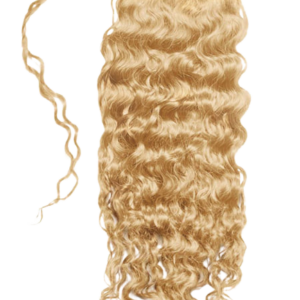
Any Color Any Length 100% Human Ponytail Hair Extensions
Rated 5.00 out of 5From $ 165.00 Select options This product has multiple variants. The options may be chosen on the product page -
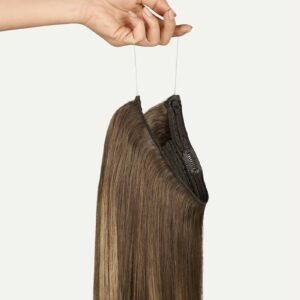
100% Any Color Any Length Halo Human Hair Extensions
Rated 5.00 out of 5From $ 165.00 Select options This product has multiple variants. The options may be chosen on the product page -
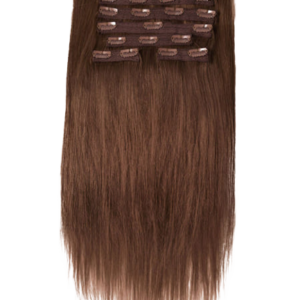
100% Human Hair Extensions Classic Clip Ins
Rated 5.00 out of 5From $ 165.00 Select options This product has multiple variants. The options may be chosen on the product page -
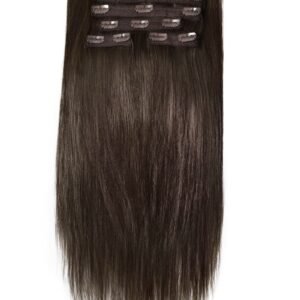
100% Human Hair Extensions Seamless Clip Ins
Rated 4.75 out of 5From $ 165.00 Select options This product has multiple variants. The options may be chosen on the product page

